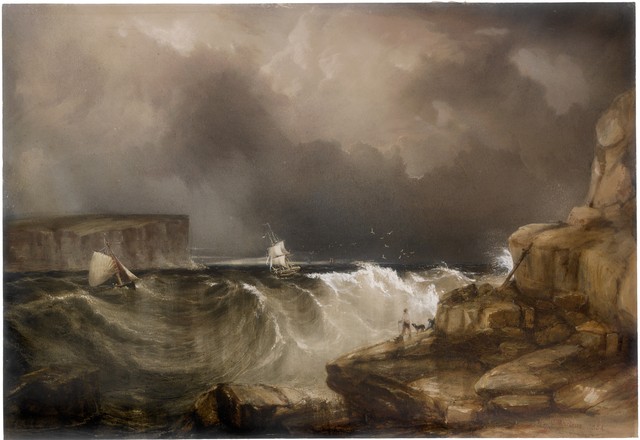
Sydney Heads
1854
Watercolour on paper
Presented by Sir William Dixson, 1929
DG*D 18
Watercolour on paper
Presented by Sir William Dixson, 1929
DG*D 18
On arriving in Sydney, Conrad Martens was immediately captivated by the splendour of Sydney Harbour and it became an enduring theme in his work. He produced views from many different vantage points, but those from Sydney’s North Shore were a particular passion. In many of his works he also featured detailed studies of rocks, particularly Sydney sandstone, which he often used to frame his compositions.
This dramatic work is a departure in style for Martens, who is better known for his warm and serene seascape and landscape views. During the 1850s, he produced a series of dark and brooding paintings of wild, stormy seas and ominous skies. Tinged with melancholy, they perhaps reflect the personal toll of the previous decade during which the youngest of his three children died and he faced difficult financial times.
In a letter to his brother Henry in 1850, Martens writes:
‘I have done no oil painting for some time; my painting room is so cold in the winter that I have been obliged to retreat to another room to draw in, but which has no light for painting. I am indeed much disheartened about painting. There is no sale for anything in that way. Small drawings and lithographs and teaching have been of late the only way of raising a little cash.’*


 Back to list
Back to list